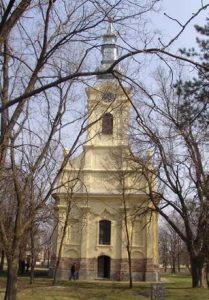Čenta (the town of Csenta) is a settlement of the town of Zrenjanin in the Central Banat District. Chenta – a typical Banat village. The greatest specificity is the geographical location of the village, because the centers, Belgrade, Zrenjanin and Pancevo are at an almost equal distance. The administrative center is Zrenjanin, but the economic connection with Belgrade is much stronger, especially due to the large number of Chancelles employed in the territory of Belgrade. According to the 2011 census (Population Census 2011 in Serbia) there were 3050 inhabitants.

The first meaning of Chente dates from 1549, in one Turkish tefter, about the description of the Szeged sandzak. At that time, 22 households (name and surname) were recorded and Voja sage. Almost all the time of Turkish rule over today’s Banat, the Chenta was inhabited, although it is not mentioned in the Peja katistiga nor in 1660, nor in 1666. Only then is the settlement of Ječin, northeast of today’s village. The jet was inhabited at the time of the expulsion of the Turks from Banat, in 1717, when there were 13 homes in the village and pop Peter. Part of Ježina moved to Čent, where the pope Peter was buried, and his monument is preserved, near the Old Church, to this day.
A lot of people died during the fall of the Turks, 1736/37. So, from the previous 22 houses, only 7 remained. The main cause of the decrease in the number of inhabitants was the plague. There is a nominal list of these households. According to the census of 1748, the Chenta has 58 homes. In 1750/53. the village is part of the Banat Land Police, and later it belongs to the XII German-Banat Pact, until 1873, when the Military Border was abolished, and the County of Čenta joined the Toronto County. The name of the village originates, probably, from the Old Slavic word “Chantra” (bag), because the village, in the Middle Ages, was surrounded by bars and marshes. for most of the years, found practically on the island, and the locals in that village were hidden as if in a bag, from unwanted passers-by and tax collectors. By entering Čente as part of the Military Border in 1753, the village gets the name Leopoldovo and retains its name until 1883, when the village is returned to the previous name.
